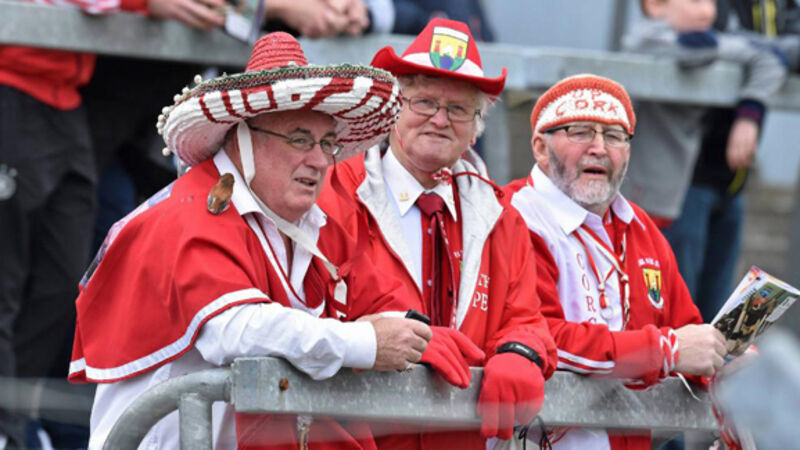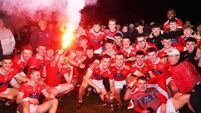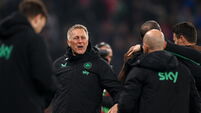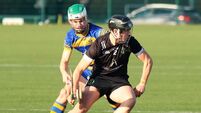Talk about asking the right question

“Talk about your team’s performance/that last goal/the end of the game.”
The loosely-phrased, lazy question was the subject of much criticism in the piece by Bryan Curtis of Grantland (The Worst Question in Sports: What We Talk About When We Say ‘Talk About’).
In passing, Curtis referred to a John Sawatsky, who “teaches the art of asking questions at ESPN”, and I decided to reach out to John and a) ask him about sports interviewing and b) get a free tutorial in the subject.
He wasn’t long stamping on “talk about”.
“Well, I have seven deadly sins of interviewing, and deadly sin number one is the non-question.
“‘Talk about’ means you’re not asking a question, you’re giving a command to somebody, which isn’t a good way to proceed. I think a lot of people who use ‘tell me about …’ don’t know how to ask good questions and they fall back on that.”
Sawatsky stresses the application of process to your interviewing - you’ll read the entire piece in these pages soon - but I also asked about fall-back interview questions for when your mind goes blank.
Or when my mind goes blank, to be precise.
“We ask a lot of different questions with a lot of different goals, but the most basic question is ‘what happened?’ That’s what we want to know; we want to know what went on.
“I have some off-the-shelf questions, as I call them, because they’re generic, ready to use — sitting on the shelf and applicable to every situation.
“The three basic ones are what happened, how did it happen, and why did it happen. That’ll cover a lot of basics.”
Sawatsky pointed out that ego on the part of the person asking the questions can be an obstacle to a good interview: “Particularly in television. I work with a lot of anchors, and I often say, ‘here’s the natural question’, and they say, ‘that makes me look dumb’.
“My response is ‘get the best result and don’t worry about what you look like; if you get a good result you’ll look good, if you don’t get a good result you won’t’. That’s how they should look at it.
“It’s like teeing up a golf shot. If your goal is to look good on television, you won’t hit the ball straight and far; if you focus on hitting the ball straight and far, then your swing will look good.”
By the way, in case you think this is all very interesting if you’re an interviewer by profession, think again. Sawatasky has a view of the sports interview every fan should share.
“The interview’s become a very sophisticated battle for control. The other side wants control and wants to use the interview for their own purposes, whether that’s PR or marketing or getting a message across.
“If we let them do that then they’ll use that interview for their own vested interests.
“You can’t really blame them for doing that, but that’s why we have to understand what’s going on. Because our job is to inform our audience or readers about what’s going on in the world of sports. And we’ll be judged on how well we do that.”
In the forthcoming feature you’ll read the expert’s critique of my interviewing technique. No ego here, see?
My eye was drawn to a recent item in the US media about the sale of a company, but not just any company.
“After more than a century,” reported The New York Times, “the owner of Louisville Slugger is finally handing over the company — whose bats have been used by the likes of Babe Ruth and Jackie Robinson — to a division of a Finnish sports gear maker.
“Hillerich & Bradsby, whose founder created a line of hardwood bats in the 19th century, said on Monday that it would sell the brand for $70 million to Wilson, which is owned by the Amer Sports Corporation of Finland.”
The Slugger is a profitable commodity — the Times added that the majority of professional baseball players use them, and the company has sold more than 100 million bats since the late 1800s. The report added that the market for baseball and softball gear is hefty — worth $1.4 billion in the United States.
Wearing my GAAconomics hat, I was wondering what the hurling dividend to the economy would be: if anyone can help, I’m at michael.moynihan@examiner.ie
I’m concerned by the substance abuse going on in the GAA.
Namely, the ongoing usage of light pastries, biscuits, and other such post-dinner sugar-laden snacks, and their oddly under-reported significance in the story of hurling.
We were all aware of the Clare hurlers’ reliance on Mi-Wadi and – significantly – biscuits in their run to the All-Ireland two years ago. How could we not be?
In this they were following a proud tradition: Justin McCarthy’s autobiography contains a telling anecdote about the Cork hurlers under his watch having to pile into a sweet shop for biscuits before winning the Centenary Cup – and then the All-Ireland, that same year.
Then, just to complete the Bilderberg aura about the allure of the calorific accompaniment, Henry Shefflin confessed to us last week in Kilkenny that his crucial conversation with Brian Cody took place over tea and scones.
Your first reaction is probably to wonder what Paddy Leahy and Jim Barry would have made of this reliance on artificial stimulants. The second is to hope fervently that no county will sink to the hard stuff in an effort to catch up with the last two All-Ireland winners. Yes, the sooner your Tunnock’s Tea Cakes, your Chocolate Kimberleys, your Viscounts are declared performance-enhancing supplements to keep our young hurlers from being hooked, the better.
I’m just putting you on notice: the actor Jake Gyllenhaall is in a new movie, Southpaw, about boxing, and recent photos show he’s in convincing shape.
However, be prepared for the inevitable comment from some trainer or other with no question of a vested interest saying Gyllenhaal “could have been a professional boxer” in the proud tradition of Robert De Niro and Daniel Day-Lewis, both of whom received similar glowing references in their time.
(Helpful notes dept: Day-Lewis was 40 and De Niro 37, respectively, when their boxing movies were released; bear that in mind when you read the publicity for Southpaw.)












